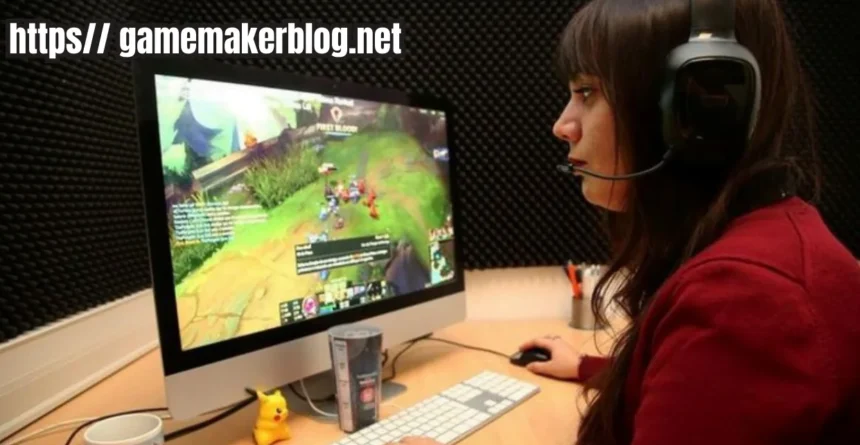Introduction to game development
Game development is an exciting journey filled with creativity, challenges, and endless possibilities. Whether you’re a seasoned developer or just starting out, the road to crafting your own video game can be both thrilling and daunting. With thousands of games released every year, standing out in this competitive landscape requires more than just talent; it demands strategy and planning.
Imagine bringing your unique vision to life, engaging players around the world while navigating the complexities of design, programming, and storytelling. This blog post will provide you with ten essential tips about https// gamemakerblog.net that can help pave your path to success in game development. From nurturing innovative ideas to embracing collaboration and feedback, these insights are designed to inspire and guide you on your quest for creating a remarkable game experience.
Ready to dive in? Let’s explore how you can elevate your game development skills!
Tip 1: Start with a solid idea and concept
Every great game begins with a compelling idea. It’s the foundation upon which everything else will build. Take your time to explore different concepts before settling on one that resonates.
Think about what excites you as a player. Is it an engaging story, innovative mechanics, or perhaps unique art style? Your passion for the concept can drive motivation throughout development.
Don’t shy away from brainstorming sessions. Jot down all ideas without judgment; creativity often flourishes in chaos. Once you have options, refine them into a cohesive vision.
Consider your target audience too. What do they enjoy? Tailoring your concept to fit their preferences can significantly impact engagement and success.
Remember that even the most basic ideas can evolve into something extraordinary with thoughtful execution and iteration over time.
Tip 2: Plan and organize your game development process
A well-structured plan is the backbone of successful game development. It helps you visualize your goals and keep track of progress.
Start by outlining key milestones. Identify what needs to be accomplished at each stage. This creates a roadmap, guiding your team through the various phases of development.
Organize tasks using project management tools like Trello or Asana. These platforms allow for easy assignment tracking and foster accountability within your team.
Regular check-ins will help ensure everyone remains aligned with the overall vision. Adjustments may be necessary as you move forward, so stay flexible in your approach.
Documentation is equally important; keep records of ideas, changes, and decisions made during development. This way, you retain insights that can inform future projects or iterations on current ones.
Remember that clarity breeds creativity; an organized process enables more focus on making engaging gameplay experiences rather than getting lost in chaos.
Tip 3: Utilize the right tools and software
Choosing the right tools can make or break your game development journey. With countless options offered by https// gamemakerblog.net, it’s essential to find software that aligns with your vision.
Start by identifying what type of game you want to create. Whether it’s a 2D platformer or a complex 3D world, different genres call for specific tools. Popular engines like Unity and Unreal Engine cater to various needs and skill levels.
Don’t overlook asset creation software either. Tools like Blender for modeling or Adobe Photoshop for textures will enrich your project significantly. These programs enhance creativity and streamline workflows.
Always keep an eye on community feedback about these tools. User experiences can reveal hidden gems or potential pitfalls that you might not see at first glance.
Remember that learning curves vary across platforms; invest time in tutorials and documentation to maximize their potential for your games.
Tip 4: Collaborate with others and seek feedback
Collaboration can elevate your game development journey. Engaging with others brings fresh perspectives and ideas to the table.
Seek out fellow developers, artists, or musicians who share your vision. This diversity can spark creativity you might not have tapped into alone.
Feedback is invaluable in refining your project. Share early builds with trusted peers to get their insights. They may spot issues or opportunities for improvement that you’ve overlooked.
Consider joining online communities or local meetups focused on game development. These spaces foster collaboration and constructive criticism.
Embrace feedback positively; it’s a tool for growth rather than a setback. Remember, even industry veterans rely on input from others to perfect their work.
Building connections not only enhances your skills but also creates a support network that can motivate you throughout the process.
Tip 5: Playtest, playtest, playtest!
Playtesting is a crucial step in game development. It allows you to see how players interact with your creation. Observing real users can reveal unexpected issues and highlight areas for improvement.
Gather a diverse group of testers. Different perspectives can uncover unique insights that you might overlook. Encourage them to provide candid feedback about their experience.
Don’t just playtest once; make it an ongoing part of your process. Each iteration should be followed by another round of testing. This will help refine gameplay mechanics and enhance user engagement.
Consider using various methods, such as focus groups or open beta tests, to gather data effectively. Be open-minded when receiving criticism—it’s a tool for growth rather than failure.
Remember, the goal is to create an enjoyable experience for players. The more you test and iterate, the closer you’ll get to achieving that vision.
Tip 6: Don’t be afraid to make mistakes and iterate
Mistakes are part of the journey in game development. Embracing them can lead to unexpected breakthroughs. When you hit a snag, take a moment to assess what went wrong. This reflection is crucial for growth.
Iteration is your best friend. It’s about refining your ideas and mechanics based on feedback and personal insights. Don’t shy away from making changes, even if it feels daunting at first.
Remember, every great game started as an unfinished concept with flaws that needed fixing. Use those missteps as stepping stones rather than roadblocks.
Cultivating a mindset open to failure fosters creativity and innovation. Each iteration brings you closer to realizing your vision, so don’t hold back—experiment boldly!
Tip 7: Stay Focused
Staying focused is key in game development. The journey can be long and challenging, but perseverance pays off.
Find your rhythm and stick to a routine. Set aside dedicated time for your project each week. Consistency helps you maintain momentum, even when motivation wavers.
Surround yourself with positive influences. Connect with fellow developers or join online communities where support flows freely. Sharing experiences boosts morale.
Remember the importance of self-care too. Take breaks to recharge your mind and creativity. This balance will keep you engaged without burning out.
Stay adaptable as well. Game development often leads to unexpected twists and turns; embracing change can lead you down exciting new paths that enhance your vision.
Every small step forward counts toward realizing your dream game, so stay committed!
Tip 8: Stay Updated with Industry Trends
The gaming industry evolves rapidly. Staying informed about the latest technologies, trends, and player preferences can give you a competitive edge.
Follow influential developers on social media or subscribe to relevant newsletters. This keeps your knowledge fresh and sparks new ideas.
Participate in online forums or communities where game developers share insights. Engaging with others can also help you identify emerging genres or gameplay mechanics that resonate with players.
Attend game development conferences when possible. These events offer valuable networking opportunities and allow you to learn from experts in the field.
Remember, adaptation is key in this dynamic environment. Embrace changes rather than resist them; they might just inspire your next big project.
Tip 10: Embrace Continuous Learning
Game development is an ever-evolving field. New technologies, trends, and techniques emerge regularly. Keeping up can feel overwhelming but it’s essential for growth.
Engage with online courses and tutorials that correspond to your interests. Platforms like Udemy or Coursera offer a wealth of resources tailored for game developers at every level.
Join forums and communities where you can ask questions and share experiences. Networking provides insights that books often don’t cover.
Attend conferences or local meetups when possible. These events foster connections with industry professionals who may offer mentorship opportunities or collaboration prospects.
Stay curious about different aspects of game design—art, sound, coding—and explore them beyond your comfort zone. This broad knowledge will enhance versatility in your projects while igniting inspiration for future games.
Conclusion
Game development can be an exhilarating journey filled with challenges and victories. Following these ten tips can help you navigate the complex landscape of game creation more effectively. Embrace your creativity, stay organized, and remember that feedback is invaluable in refining your ideas.
As you embark on this adventure, keep your passion alive and remain open to learning along the way. The gaming world is ever-evolving, so staying informed about new tools and trends will serve you well. With dedication and perseverance, success in game development is not just a dream—it’s within reach.
Let each step contribute to your growth as a developer. Your unique vision deserves to be shared with players everywhere. So take that first step today; who knows where it might lead?










